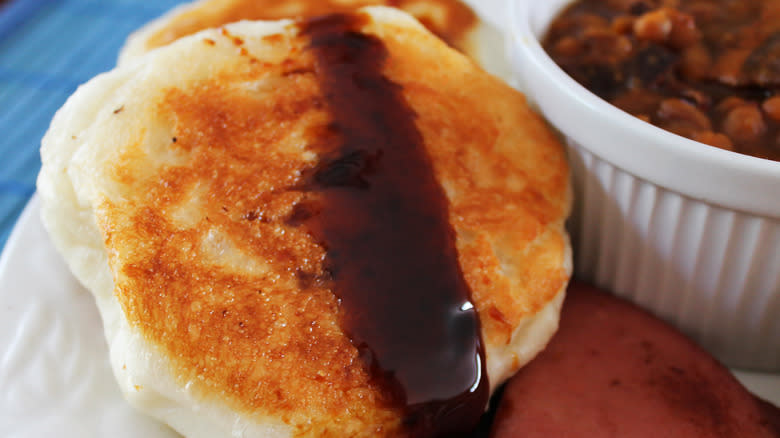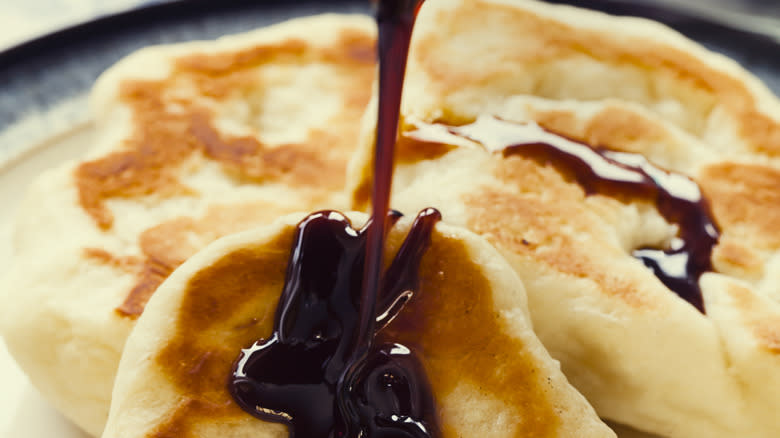This Canadian Fried Bread Is The Perfect Way To Use Up Your Leftover Dough

The easternmost and newest Canadian province of Newfoundland is a small, isolated island with bitterly cold winters. Cold, wet climates call for comforting and hearty food that'll stick to your bones, and Newfoundland's fried bread is a perfect example of such a dish. Toutons are a unique recipe to come out of Newfoundland as early as the 1800s, passed down through the generations.
Toutons are made from leftover yeast dough stretched into round cakes and fried in pork fat. They're traditionally served with butter and molasses. British settlers established Newfoundland, and it remained a British protectorate until its inclusion into Canada in 1949. Therefore, many locals theorize that toutons are a byproduct of both conservation and the British dominion over transatlantic trade. Locals assert that most households baked bread regularly, leaving the dough to rise overnight. Any leftover dough not used for their daily bread was formed into toutons and fried for breakfast. Molasses is a derivative of sugarcane and a key staple in Newfoundland, arriving via the West Indies due to British colonialism.
Newfoundlanders often fried leftover bits of pork back in the fat used to fry the toutons, often incorporating the cracklings into touton dough or topping the freshly fried bread with them for even more savory decadence. While modern-day households no longer bake their own bread regularly, toutons are still prized family recipes and common menu items at breakfast and brunch restaurants around the island.
Read more: 23 Whole Foods Baked Goods, Ranked
Touton Variations And Ingredient Swaps

Toutons are a source of pride around Newfoundland, although most locals describe it as a no-recipe recipe because it uses standard yeast bread dough, for which different recipes and proportions abound. Molasses has remained the unifying constant in how Newfoundlanders garnish toutons, giving them a perfect balance of sweet and savory when paired with melted butter. Molasses is an ultra-rich, ultra-thick sugarcane reduction that also tastes great over oatmeal.
Modern recipes have swapped pork fat for canola oil, eliminating the umami-richness of the original recipe. That said, brunch restaurants and modern adaptations have incorporated toutons into famously savory brunch favorites like eggs benedict and bacon, egg, and cheese breakfast sandwiches. They puff up into perfectly sized rounds with a fluffy crumb and crispy crust for the ultimate English muffin upgrade. Other garnishes include more Canadian imports like maple syrup and seasonal berry jams.
If you want to try to mimic the original savory touton recipe, you could pan-fry them in bacon grease or lard, chopping up crispy bacon bits to add to the dough. While Newfoundlanders assert that toutons are an original and unique tradition, similar fry bread is a common dish in cultures across the globe, and even in other Canadian provinces. For example, beaver tails are oblong-shaped fry breads with a colorful history of their own; they're sold in Quebec, Calgary, and British Colombia, adorned with your choice of sweet ingredients, from candy to chocolate syrup, to a scoop of ice cream.
Read the original article on Tasting Table


